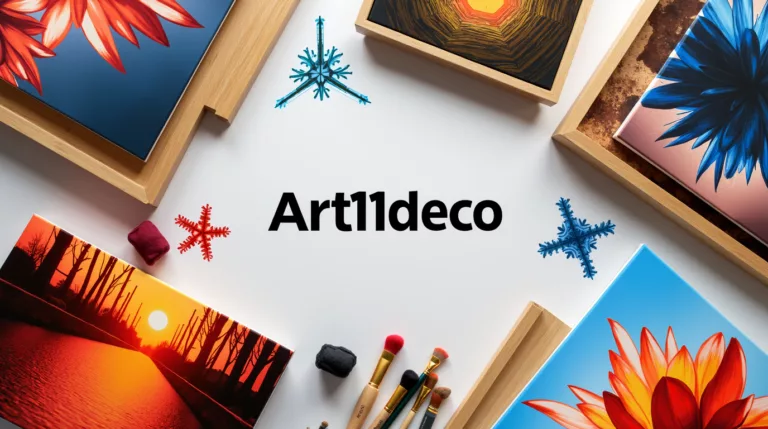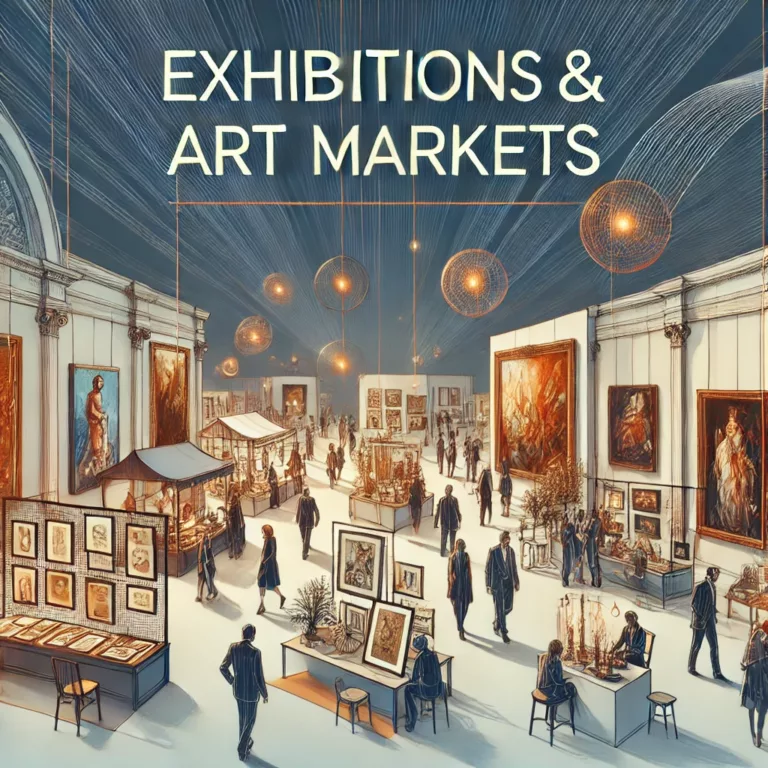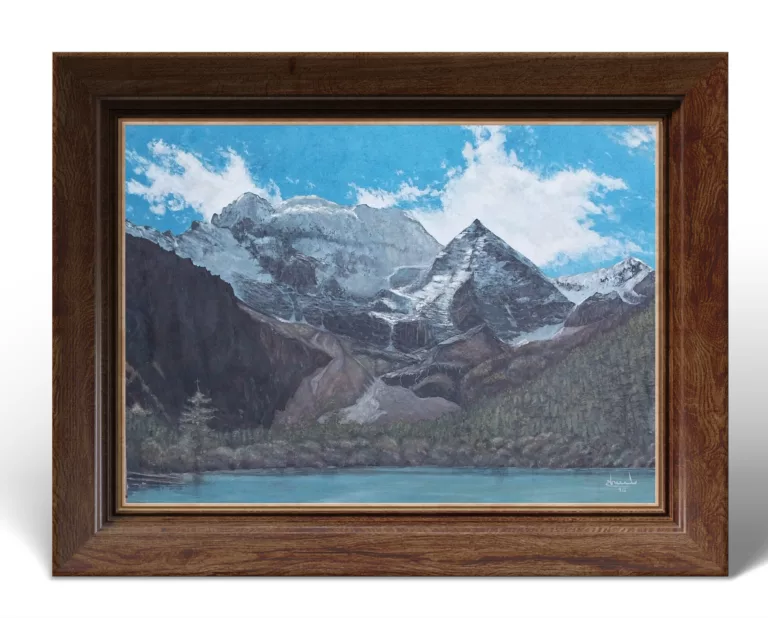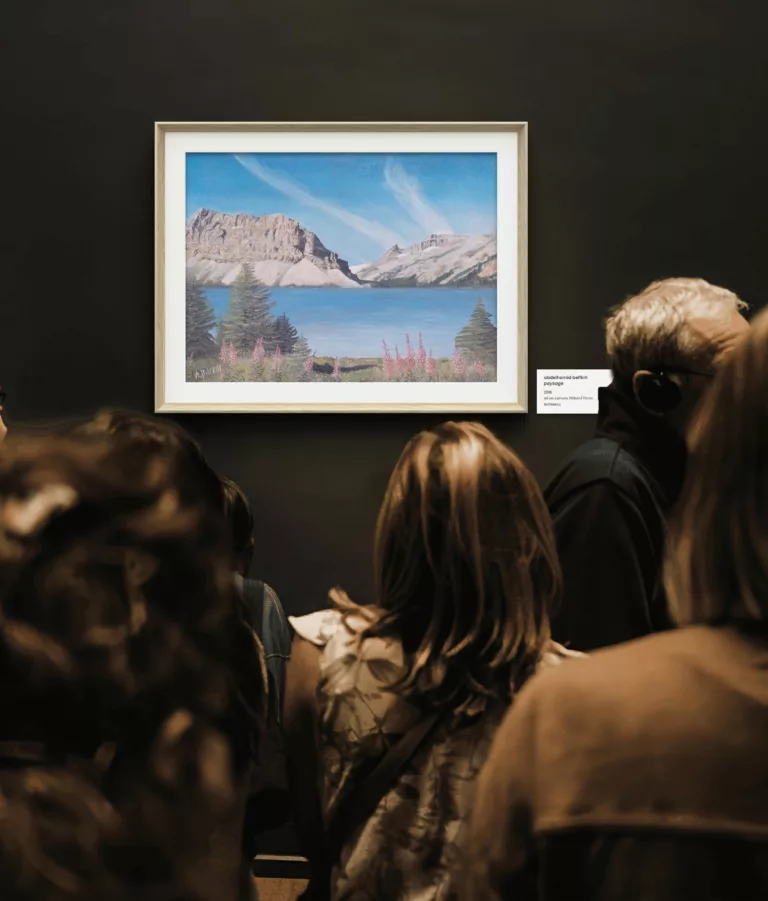How to Create a Website That Sells Art
In today’s digital world, having a website is essential for artists who want to sell their work online. A well-designed website not only showcases your art but also attracts buyers, builds your brand, and generates consistent sales. Whether you’re selling original paintings, prints, or digital artwork, this guide will walk you through the key steps to creating a website that sells art effectively.
1. Why Do You Need a Website to Sell Art?
Many artists rely on social media or third-party platforms to sell their work, but these platforms have limitations. A personal website offers several advantages:
- Full Control: Unlike marketplaces like Etsy or Saatchi Art, you own your website, set your prices, and avoid high commission fees.
- Stronger Branding: A professional website helps you stand out and build a recognizable art brand.
- Better Customer Experience: You can customize the shopping experience to make it easy for buyers to browse and purchase your art.
- SEO and Marketing Opportunities: A website allows you to optimize for search engines (SEO) and drive organic traffic to your store.
2. Choosing the Right Platform for Your Art Website
The first step in creating a website is selecting the right platform. Here are some of the best options for artists:
1. Shopify
- Best for artists who want an all-in-one eCommerce solution.
- Easy to use with built-in payment processing.
- Customizable themes and plugins for art businesses.
2. WordPress + WooCommerce
- Ideal for artists who want full customization.
- Requires some technical knowledge but offers powerful features.
- Great for blogging and SEO optimization.
3. Squarespace
- Simple and stylish, perfect for artists who want an elegant online store.
- Offers beautiful templates with built-in eCommerce features.
4. Big Cartel
- A budget-friendly option for artists with a small collection.
- Limited features but easy to set up and manage.
5. Etsy Pattern
- Works as an extension of Etsy, allowing you to have a standalone website.
- Best for artists who already sell on Etsy and want a personal website.
3. Designing Your Art Website for Maximum Sales
A well-designed website is crucial for converting visitors into buyers. Here’s how to optimize your website’s design:
1. Choose a Clean and Professional Layout
- Use a minimalistic design that highlights your artwork.
- Avoid clutter and unnecessary distractions.
- Use high-quality images to showcase your art.
2. Optimize for Mobile Users
- Many buyers browse and shop on their phones.
- Make sure your website is mobile-friendly and loads quickly.
3. Use a Simple Navigation Menu
- Include clear categories like “Original Paintings,” “Prints,” “About the Artist,” and “Contact.”
- Make it easy for visitors to find what they’re looking for.
4. Add a Search Bar
- If you have a large collection, allow users to search by category, color, size, or price.
4. Essential Pages for Your Art Website
Your website should include the following key pages:
1. Home Page
- Feature your best artwork in a visually appealing layout.
- Include a short introduction about your art style and what makes your work unique.
2. Shop Page
- Display your available artwork with clear pricing.
- Use high-resolution images and provide detailed descriptions.
- Offer multiple payment options (PayPal, credit cards, etc.).
3. About Page
- Share your story as an artist.
- Include a professional photo and a personal bio.
- Explain your artistic journey and inspirations.
4. Contact Page
- Make it easy for buyers to reach you.
- Include an email form, social media links, and business contact details.
5. Blog Page (Optional)
- Writing about your artistic process can attract visitors and improve SEO.
- Share insights on art trends, painting techniques, or behind-the-scenes content.
5. How to Market Your Art Website
Even the best website won’t generate sales without marketing. Here’s how to drive traffic to your store:
1. Search Engine Optimization (SEO)
- Use keywords like “buy original paintings online” or “modern art prints for sale” in your content.
- Optimize your images with descriptive file names and alt text.
- Write blog posts about art topics to rank higher in Google searches.
2. Social Media Marketing
- Share your website link on Instagram, Facebook, Pinterest, and TikTok.
- Create engaging content like time-lapse videos, studio tours, and artwork previews.
- Use hashtags like #BuyArtOnline, #ArtForSale, and #SupportArtists.
3. Email Marketing
- Build an email list and send updates about new artwork and special discounts.
- Offer a 10% discount to subscribers as an incentive.
4. Collaborate with Influencers & Bloggers
- Partner with art influencers who can showcase your work to their followers.
- Reach out to art bloggers for website features or reviews.
5. Use Paid Advertising
- Run Facebook and Instagram ads targeting art lovers.
- Use Google Ads for keywords like “abstract paintings for sale”.
6. Pricing and Selling Your Art
Setting the right prices is crucial for making consistent sales.
1. Factors to Consider in Pricing
- Material Costs: Consider the cost of canvas, paint, and framing.
- Time & Effort: Account for the hours spent creating the artwork.
- Market Research: Compare prices of similar artists in your niche.
- Limited Editions vs. Open Editions: Scarcity increases value.
2. Offer Different Pricing Tiers
- Original Paintings: Higher price for collectors.
- Limited Edition Prints: Mid-range price for serious buyers.
- Open Edition Prints: Lower price for casual art lovers.
3. Use Psychological Pricing
- Instead of pricing at $1000, consider $995 to make it feel more affordable.
- Offer bundle discounts like “Buy 2 Prints, Get 1 Free”.
7. Shipping and Delivery Strategies
- Use reliable shipping services like DHL, FedEx, or USPS.
- Offer multiple shipping options (standard, express, insured).
- Clearly state shipping policies, estimated delivery times, and return policies.
- Package your art securely with protective wrapping.
8. Building Trust with Your Customers
Trust is a major factor in online sales. Here’s how to build credibility:
- Show Customer Testimonials: Display reviews and feedback from happy buyers.
- Offer a Money-Back Guarantee: A risk-free purchase encourages buyers to trust you.
- Use Secure Payment Methods: Accept payments through PayPal, Stripe, and major credit cards.
- Display Your Social Media Presence: A strong following reassures buyers.
Conclusion: Turn Your Website Into a Sales Machine
Creating a successful art website requires strategy, marketing, and a great user experience. By setting up a professional website, optimizing it for search engines, and marketing it effectively, you can turn your passion into a thriving online art business.
Final Action Plan:
✅ Choose the right website platform.
✅ Design a professional and easy-to-use layout.
✅ Optimize for SEO and social media marketing.
✅ Offer multiple pricing options to attract different buyers.
✅ Build trust with secure payment options and testimonials.
With the right approach, your art website can become a powerful tool for reaching buyers worldwide and growing your art career. Start today and watch your sales grow!
In today’s digital world, having a website is essential for artists who want to sell their work online. A well-designed website not only showcases your art but also attracts buyers, builds your brand, and generates consistent sales. Whether you’re selling original paintings, prints, or digital artwork, this guide will walk you through the key steps to creating a website that sells art effectively.
1. Why Do You Need a Website to Sell Art?
Many artists rely on social media or third-party platforms to sell their work, but these platforms have limitations. A personal website offers several advantages:
- Full Control: Unlike marketplaces like Etsy or Saatchi Art, you own your website, set your prices, and avoid high commission fees.
- Stronger Branding: A professional website helps you stand out and build a recognizable art brand.
- Better Customer Experience: You can customize the shopping experience to make it easy for buyers to browse and purchase your art.
- SEO and Marketing Opportunities: A website allows you to optimize for search engines (SEO) and drive organic traffic to your store.
2. Choosing the Right Platform for Your Art Website
The first step in creating a website is selecting the right platform. Here are some of the best options for artists:
1. Shopify
- Best for artists who want an all-in-one eCommerce solution.
- Easy to use with built-in payment processing.
- Customizable themes and plugins for art businesses.
2. WordPress + WooCommerce
- Ideal for artists who want full customization.
- Requires some technical knowledge but offers powerful features.
- Great for blogging and SEO optimization.
3. Squarespace
- Simple and stylish, perfect for artists who want an elegant online store.
- Offers beautiful templates with built-in eCommerce features.
4. Big Cartel
- A budget-friendly option for artists with a small collection.
- Limited features but easy to set up and manage.
5. Etsy Pattern
- Works as an extension of Etsy, allowing you to have a standalone website.
- Best for artists who already sell on Etsy and want a personal website.
3. Designing Your Art Website for Maximum Sales
A well-designed website is crucial for converting visitors into buyers. Here’s how to optimize your website’s design:
1. Choose a Clean and Professional Layout
- Use a minimalistic design that highlights your artwork.
- Avoid clutter and unnecessary distractions.
- Use high-quality images to showcase your art.
2. Optimize for Mobile Users
- Many buyers browse and shop on their phones.
- Make sure your website is mobile-friendly and loads quickly.
3. Use a Simple Navigation Menu
- Include clear categories like “Original Paintings,” “Prints,” “About the Artist,” and “Contact.”
- Make it easy for visitors to find what they’re looking for.
4. Add a Search Bar
- If you have a large collection, allow users to search by category, color, size, or price.
4. Essential Pages for Your Art Website
Your website should include the following key pages:
1. Home Page
- Feature your best artwork in a visually appealing layout.
- Include a short introduction about your art style and what makes your work unique.
2. Shop Page
- Display your available artwork with clear pricing.
- Use high-resolution images and provide detailed descriptions.
- Offer multiple payment options (PayPal, credit cards, etc.).
3. About Page
- Share your story as an artist.
- Include a professional photo and a personal bio.
- Explain your artistic journey and inspirations.
4. Contact Page
- Make it easy for buyers to reach you.
- Include an email form, social media links, and business contact details.
5. Blog Page (Optional)
- Writing about your artistic process can attract visitors and improve SEO.
- Share insights on art trends, painting techniques, or behind-the-scenes content.
5. How to Market Your Art Website
Even the best website won’t generate sales without marketing. Here’s how to drive traffic to your store:
1. Search Engine Optimization (SEO)
- Use keywords like “buy original paintings online” or “modern art prints for sale” in your content.
- Optimize your images with descriptive file names and alt text.
- Write blog posts about art topics to rank higher in Google searches.
2. Social Media Marketing
- Share your website link on Instagram, Facebook, Pinterest, and TikTok.
- Create engaging content like time-lapse videos, studio tours, and artwork previews.
- Use hashtags like #BuyArtOnline, #ArtForSale, and #SupportArtists.
3. Email Marketing
- Build an email list and send updates about new artwork and special discounts.
- Offer a 10% discount to subscribers as an incentive.
4. Collaborate with Influencers & Bloggers
- Partner with art influencers who can showcase your work to their followers.
- Reach out to art bloggers for website features or reviews.
5. Use Paid Advertising
- Run Facebook and Instagram ads targeting art lovers.
- Use Google Ads for keywords like “abstract paintings for sale”.
6. Pricing and Selling Your Art
Setting the right prices is crucial for making consistent sales.
1. Factors to Consider in Pricing
- Material Costs: Consider the cost of canvas, paint, and framing.
- Time & Effort: Account for the hours spent creating the artwork.
- Market Research: Compare prices of similar artists in your niche.
- Limited Editions vs. Open Editions: Scarcity increases value.
2. Offer Different Pricing Tiers
- Original Paintings: Higher price for collectors.
- Limited Edition Prints: Mid-range price for serious buyers.
- Open Edition Prints: Lower price for casual art lovers.
3. Use Psychological Pricing
- Instead of pricing at $1000, consider $995 to make it feel more affordable.
- Offer bundle discounts like “Buy 2 Prints, Get 1 Free”.
7. Shipping and Delivery Strategies
- Use reliable shipping services like DHL, FedEx, or USPS.
- Offer multiple shipping options (standard, express, insured).
- Clearly state shipping policies, estimated delivery times, and return policies.
- Package your art securely with protective wrapping.
8. Building Trust with Your Customers
Trust is a major factor in online sales. Here’s how to build credibility:
- Show Customer Testimonials: Display reviews and feedback from happy buyers.
- Offer a Money-Back Guarantee: A risk-free purchase encourages buyers to trust you.
- Use Secure Payment Methods: Accept payments through PayPal, Stripe, and major credit cards.
- Display Your Social Media Presence: A strong following reassures buyers.
Conclusion: Turn Your Website Into a Sales Machine
Creating a successful art website requires strategy, marketing, and a great user experience. By setting up a professional website, optimizing it for search engines, and marketing it effectively, you can turn your passion into a thriving online art business.
Final Action Plan:
Choose the right website platform.
Design a professional and easy-to-use layout.
Optimize for SEO and social media marketing.
Offer multiple pricing options to attract different buyers.
Build trust with secure payment options and testimonials.
With the right approach, your art website can become a powerful tool for reaching buyers worldwide and growing your art career. Start today and watch your sales grow!
Art11deco







